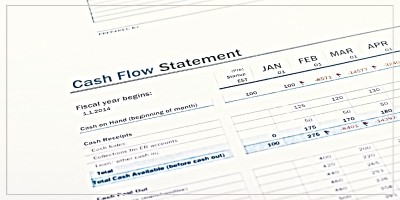Resources
Cash flow statement

A cash flow statement tracks the inflow and outflow of cash, providing insights into a company's financial health and operational efficiency.
How to Prepare a Cash Flow Statement:
1. Gather Financial Statements
Before you begin, collect the necessary financial statements:
-
Income statement: Provides information on revenues, expenses, and net income.
-
Balance sheet: Shows the company’s assets, liabilities, and equity at the beginning and end of the period.
2. Determine the Reporting Period
Identify the period for which you are preparing the cash flow statement. This could be monthly, quarterly, or annually.
3. Choose the Method
Decide whether you will use the direct method or the indirect method to prepare the CFS. The direct method involves listing all cash receipts and payments during the reporting period, while the indirect method starts with net income and adjusts for changes in non-cash transactions.
4. Prepare the Statement
Cash Flow from Operating Activities
-
Direct Method: List cash receipts: Include cash collected from customers. List cash payments: Include cash paid to suppliers, employees, interest paid, and income taxes paid. Calculate net cash flow from operating activities: Subtract total cash payments from total cash receipts.
-
Indirect Method: Start with net income: Obtain this from the income statement. Adjust for non-cash items: Add back depreciation and amortization. Adjust for changes in working capital: Account for changes in accounts receivable, inventory, accounts payable, and other working capital accounts. Calculate net cash flow from operating activities: Combine the adjusted net income with changes in working capital.
Cash Flow from Investing Activities
Identify cash transactions for investments: Include cash spent on purchasing fixed assets, cash received from selling assets, and cash spent on or received from investing in securities. Calculate net cash flow from investing activities: Subtract cash payments for investments from cash receipts from sales of investments.
Cash Flow from Financing Activities
Identify cash transactions for financing: Include cash received from issuing stock or debt and cash spent on repaying debt or buying back stock. Calculate net cash flow from financing activities: Subtract cash payments for financing activities from cash receipts from financing activities.
5. Combine All Sections
Add the net cash flows from operating, investing, and financing activities to determine the overall change in cash and cash equivalents for the period.
6. Reconcile with Beginning Cash
Add the change in cash to the beginning cash balance to arrive at the ending cash balance, ensuring it matches the cash balance reported on the balance sheet.